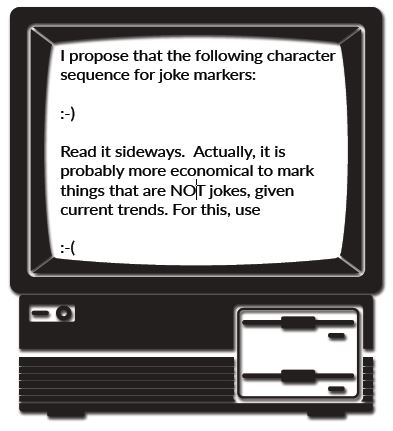Chapter 9: New Media & Communication
9.3 Nonverbal communication in mediated contexts
Nonverbal Cues
One issue related to CMC is nonverbal communication. Historically, most of the media people have used to interact with one another have been asynchronous and text-based, making it difficult to fully ascertain the meaning behind a string of words. Mary J. Culnan and M. Lynne Markus believe that the functions nonverbal behaviors meet in interpersonal interactions simply go unmet in CMC (1987). If so, interpersonal communication must always be inherently impersonal when it’s conducted using computer-mediated technologies. This perspective has three underlying assumptions:
- Communication mediated by technology filters out communicative cues found in face to face interaction,
- Different media filter out or transmit different cues, and
- Substituting technology-mediated for face to face communication will result in predictable changes in intrapersonal and interpersonal variables.
First, CMC interactions “filter out” communicative cues found in face to face interactions. For example, if you’re on the telephone with someone, you can’t make eye contact or see their gestures, facial expressions, etc.… If you’re reading an email, you have no nonverbal information to help you interpret the message because there is none. In these examples, the nonverbal cues have been “filtered out” by the media being used.
Unfortunately, even if we don’t have the nonverbals to help us interpret a message, we interpret the message using our perception of how the sender intended us to understand this message, which is often wrong. How many times have you seen an incorrectly read text or email start a conflict? Of course, one of the first attempts to recover some sense of nonverbal meaning was the emoticon that we discussed earlier in this chapter.
One early realization about email and message boards was that people relied solely on text to interpret messages, which lacked nonverbal cues to aid in interpretation. On September 19, 1982, Scott Fahlman, a research professor of computer science at Carnegie Mellon, came up with an idea. You see, at Carnegie Mellon in the early 1980s (like most research universities at the time), they had their own bulletin board system (BBS), which discussed everything from campus politics to science fiction. As Fahlman noted,
“Given the nature of the community, a good many of the posts were humorous, or at least attempted humor.” But “The problem was that if someone made a sarcastic remark, a few readers would fail to get the joke and each of them would post a lengthy diatribe in response.”4

After giving some thought to the problem, he posted the message seen in Figure 12.3. Thus, the emoticon (emotion icon) was born. An emoticon is a series of characters that are designed to help readers interpret a writer’s intended tone or the feelings the writer intended to convey. Over the years, many different emoticons were created like the smiley and sad faces, lol (laughing out loud), ROFL (rolling on the floor laughing), :-O (surprise), :-* (kiss), 

